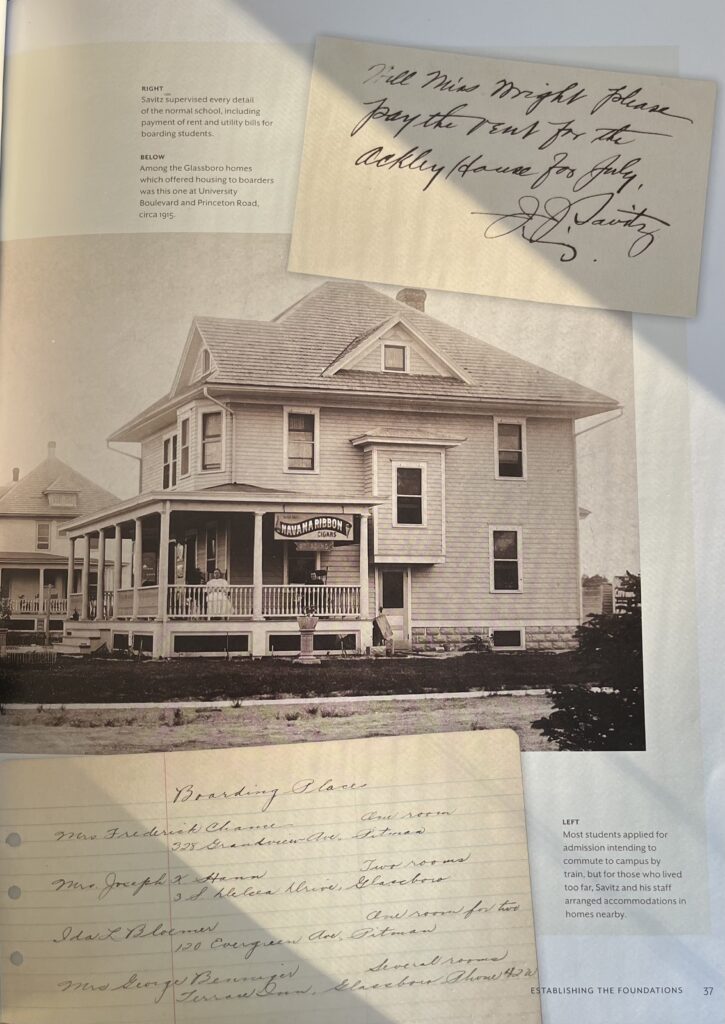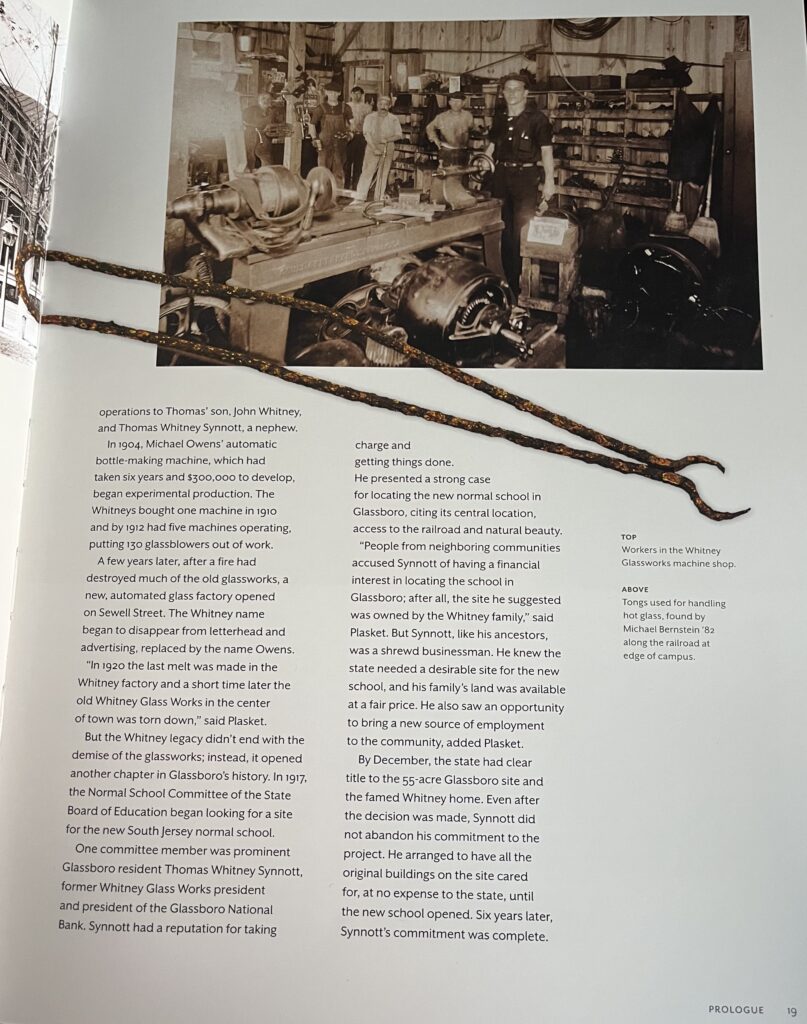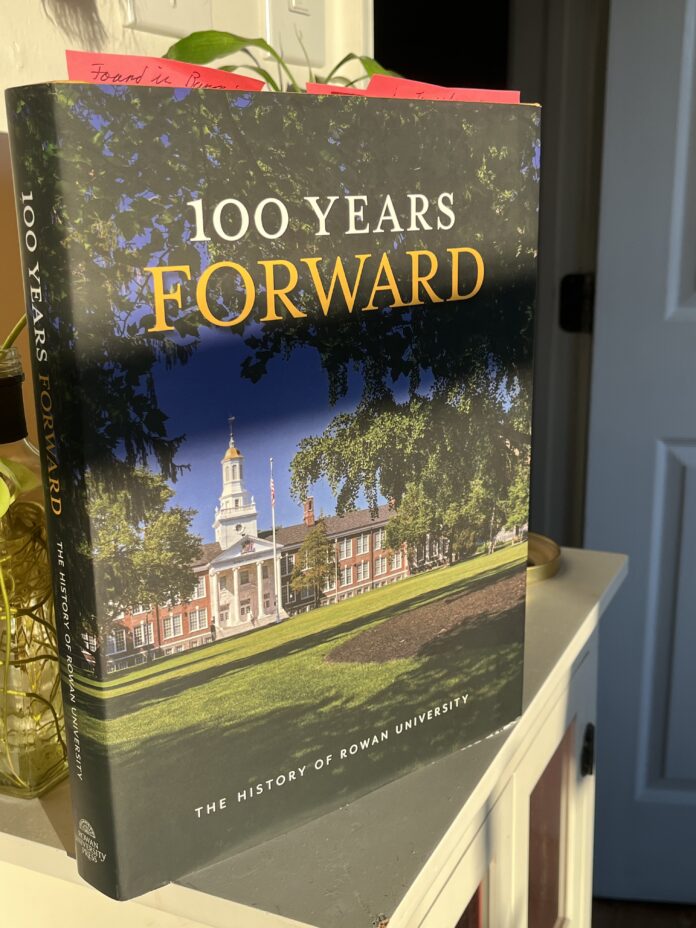“This project was, in my 34 years at Rowan, the single most challenging, demanding, substantial…project. You don’t [just] end up with a five-pound book at 352 pages and more than 1,000 illustrations…overnight,” said Lead Editor of “100 Years Forward” and Assistant Vice President of University Relations Lori Marshall.
During a personal, sit-down interview, Marshall describes exactly what it took to complete this book in celebration of Rowan’s centennial.
The project “100 Years Forward: The History of Rowan University,” started “in [the] summer [of] 2009,” according to a speech Marshall gave at its book launch.
The book was quietly released during an invitation-only book launch but a much bigger celebration followed.
“We knew, no matter what happened, we had to have a book in hand by Oct. 14, and sure enough, we were able to get advance copies on Oct. 12 for the reception,” Marshall said.
The release of the book was only the surface.
Rewinding to 2009, Marshall recounts how the book began to manifest. She assures that no one person or event inspired the book.
“No one really owns the idea for the book specifically, but it’s one of those institutional imperatives,” Marshall said. “When we were still fairly far out from our 100th anniversary, we knew that we would need to do it [create the book] and Tom [Gallia] immediately became our champion. He knew the value of the history. And we started at that point, trying to identify folks who could help write; folks who we should identify for interviews; people who likely had interesting documents and perspectives, and just [people] who could give us the inside scoop.”
As excitement increased, identifying sources became a growing task. According to Marshall, it’s the people who are the heart of this book.
“If you just tell a history story that’s just the facts, it’s dull and it doesn’t take into account context and personalities and ambition and a lot of the things that happen when you’re part of a vibrant organization. So, it’s really important to talk to people who lived the history,” Marshall said.
Eventually, Marshall and the team established a foundation, readying themselves for further planning and operations.
“With Tom’s blessing on the project, Ed Ziegler emailed me a plan on Christmas Eve, 2009. Ed researched printers, budgets, a possible production schedule, and sales. We envisioned the book as a prelude to the centennial and started working,” according to Marshall’s speech at the book launch.
Even with Tom’s approval and initial okay, there were other Rowan officials who needed to be on board.
“After the initial yes…from Tom, 14 years ago…a lot of stuff happened. Our presidents actually changed so we had a new president and it was really important that President Houshmand blessed the project; that he saw the value in the project, and of course he did,” Marshall said. “It’s really important for folks who look at the university from the outside to get a sense of momentum and it’s important for people on the inside to say, ‘I’m proud of that, I’m part of that.”
After a series of yeses from various officials, Marshall and the team continued their groundwork.
“At first, we thought we’d work with an outside design firm, but it soon became clear that no matter how technically competent other professionals were, they couldn’t do what we needed to knowingly and lovingly produce this book,” according to Marshall’s speech at the book launch.
With that decision in mind, Marshall turned to designers at Rowan.
“Dan Murphy and Steve Pimpinella began juggling the institution’s regular load during the day and putting in countless hours on evenings and weekends, starting way back in 2010. This has been a herculean team effort from the start. Dan and Steve played to their strengths and complemented each other’s design work,” according to Marshall’s speech at the book launch.
As the team expanded, so did the work. Throughout the entirety of the project, members of the team sacrificed time with their families and friends, and time for themselves.
“The book was a labor of love for the staff, for sure. Our families, our loved ones, were laboring alongside us the whole way,” Marshall said. “They were filling in, they were taking care of doctor’s appointments, they were cooking dinner, they were running errands.”
Without familial and personal support, this book wouldn’t be possible.
“Our families participated in this book. They may not have written a word of it, they may not have taken a picture, but every one of our families participated in making this book possible,” Marshall said.
Marshall gave up a lot herself.
“In the last year, I’ve probably gone grocery shopping maybe three or four or five times. I was never home. I couldn’t do it,” Marshall said.
She accredits her mother for tremendous support.
“My non-stop 86-year-old Italian mom would come up the stairs with a bowl of soup or coffee or fruit and cheese. When I didn’t realize how late it was, she’d flicker the lights from downstairs and send me home in the dark,” according to Marshall’s speech at the book launch.
Despite the challenges, Marshall is deeply grateful for all the families and friends who helped support loved ones working on this project.
“And for that again, I’m enormously grateful and humbled and proud that they cared enough and saw the value in the book,” Marshall said.
Although there were numberless challenges, there were a lot of good and humorous moments. Marshall recounts several times when she and other colleagues would crawl through attics and rubble to collect items for the book.
“We kept digging up and squirreling away everything we could find to help us tell the story. Last spring, Phil Graneto was in Bunce to tape an oral history and we ended up in the dusty attic of Tohill Theatre with me crawling around under the floorboards to collect 1930s tuition receipts and 1980s show programs. Phil shook his head indulgently and patiently waited as I handed him the dusty gems,” according to Marshall’s speech at the book launch.

There were many items found throughout various buildings on campus.
“We had an early renovation project in the early 2000s and when the demolition crew finished their work for the day I would go into HollyBush with another colleague and we would dig through what they had pulled out,” Marshall said. “And because of that, we found a number of things that had ended up in the book.”

Besides finding items in the rubble or within various buildings, many items were donated. Page 19 features tongs used for handling hot glass, found by an alumnus back in the 80s.

Throughout her time at Rowan, Marshall dubs this project the most challenging and demanding but one of the most rewarding.
“I am reminded of an ancient story about a Persian princess who faithfully and courageously rose to meet a challenge of epic consequence. I don’t equate our accomplishments with her heroism, but I do believe that we are all called to a purpose. Within these 100 years, we all have been called for such a time — past, present, and future. I am grateful our lives are intertwined and that we’re able to tell the story,” Marshall concluded in her speech at the book launch.
For individuals interested in purchasing the book, copies can be found at the Barnes and Noble on Rowan Boulevard and online.
For comments/questions about this story DM us on Instagram @thewhitatrowan or email the.whit.features@gmail.com






